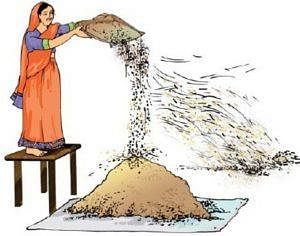UPSC Exam > UPSC Tests > Test: Crop Production and Management- 2 - UPSC MCQ
Test: Crop Production and Management- 2 - UPSC MCQ
Test Description
10 Questions MCQ Test - Test: Crop Production and Management- 2
Test: Crop Production and Management- 2 for UPSC 2025 is part of UPSC preparation. The Test: Crop Production and Management- 2 questions and answers have been prepared
according to the UPSC exam syllabus.The Test: Crop Production and Management- 2 MCQs are made for UPSC 2025 Exam.
Find important definitions, questions, notes, meanings, examples, exercises, MCQs and online tests for Test: Crop Production and Management- 2 below.
Solutions of Test: Crop Production and Management- 2 questions in English are available as part of our course for UPSC & Test: Crop Production and Management- 2 solutions in
Hindi for UPSC course.
Download more important topics, notes, lectures and mock test series for UPSC Exam by signing up for free. Attempt Test: Crop Production and Management- 2 | 10 questions in 10 minutes | Mock test for UPSC preparation | Free important questions MCQ to study for UPSC Exam | Download free PDF with solutions
Test: Crop Production and Management- 2 - Question 1
Cutting mature crop manually or by a machine is called:
Detailed Solution for Test: Crop Production and Management- 2 - Question 1
Test: Crop Production and Management- 2 - Question 2
In ancient cultures, the process of separating grains from the chaff is called:
Detailed Solution for Test: Crop Production and Management- 2 - Question 2
Test: Crop Production and Management- 2 - Question 3
The monsoon season in India is during the months:
Detailed Solution for Test: Crop Production and Management- 2 - Question 3
Test: Crop Production and Management- 2 - Question 4
Any plant cultivated at a large stretch of land is called:
Detailed Solution for Test: Crop Production and Management- 2 - Question 4
Test: Crop Production and Management- 2 - Question 5
Which of the following tools would a farmer use for removing weeds and for loosening the soil from the field?
Detailed Solution for Test: Crop Production and Management- 2 - Question 5
Test: Crop Production and Management- 2 - Question 6
Which irrigation system is most suitable for uneven land with insufficient water availability?
Detailed Solution for Test: Crop Production and Management- 2 - Question 6
Test: Crop Production and Management- 2 - Question 7
How does the drip irrigation system conserve water?
Detailed Solution for Test: Crop Production and Management- 2 - Question 7
Test: Crop Production and Management- 2 - Question 8
What is the primary purpose of weeding in crop cultivation?
Detailed Solution for Test: Crop Production and Management- 2 - Question 8
Test: Crop Production and Management- 2 - Question 9
Which tool is used for manual removal of weeds by uprooting them?
Detailed Solution for Test: Crop Production and Management- 2 - Question 9
Test: Crop Production and Management- 2 - Question 10
Why should farmers use protective measures while spraying weedicides?
Detailed Solution for Test: Crop Production and Management- 2 - Question 10
Information about Test: Crop Production and Management- 2 Page
In this test you can find the Exam questions for Test: Crop Production and Management- 2 solved & explained in the simplest way possible.
Besides giving Questions and answers for Test: Crop Production and Management- 2, EduRev gives you an ample number of Online tests for practice
Download as PDF






















